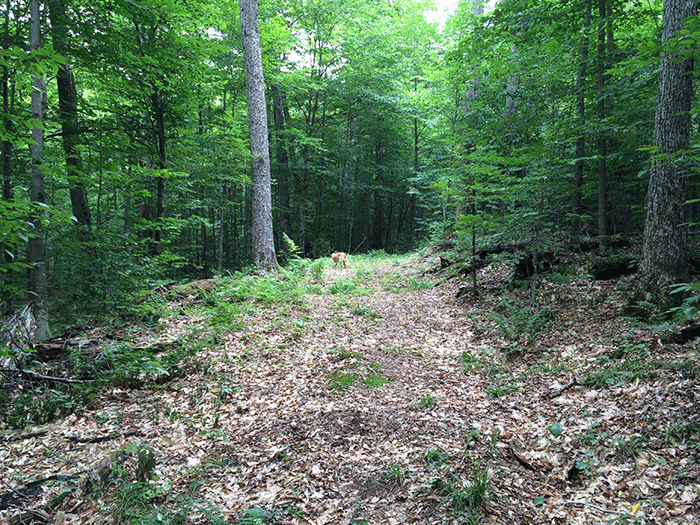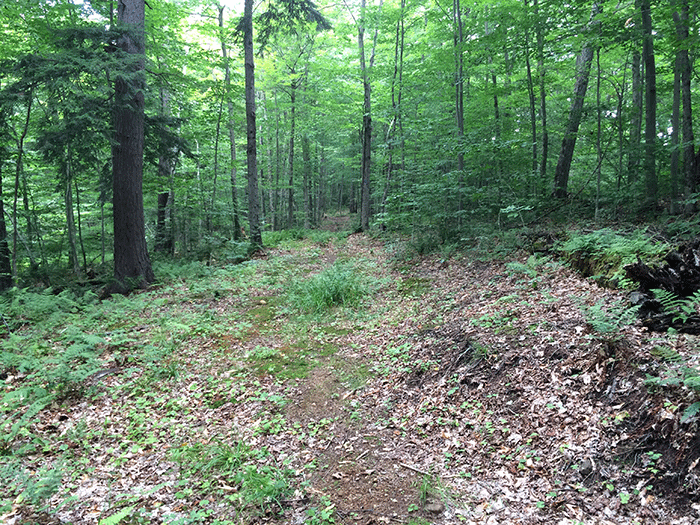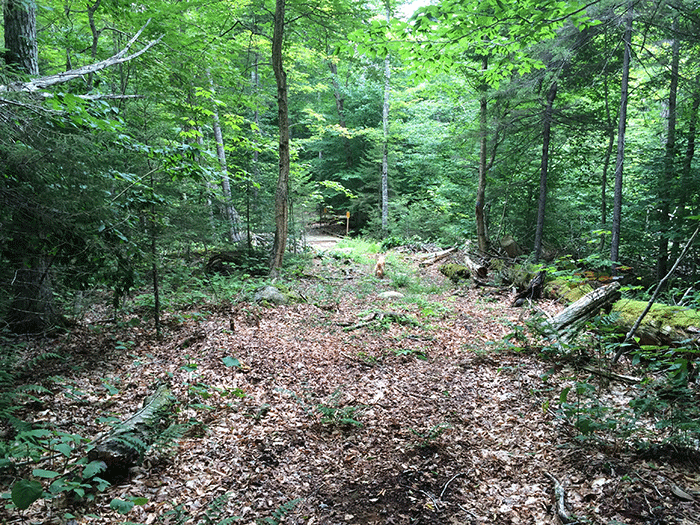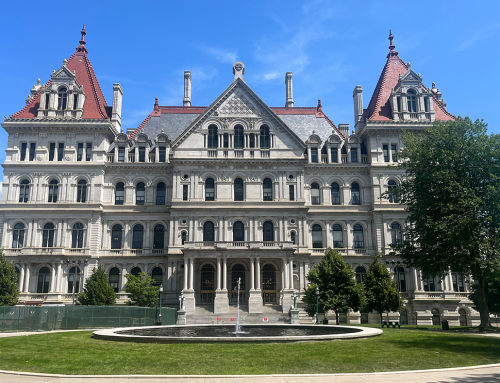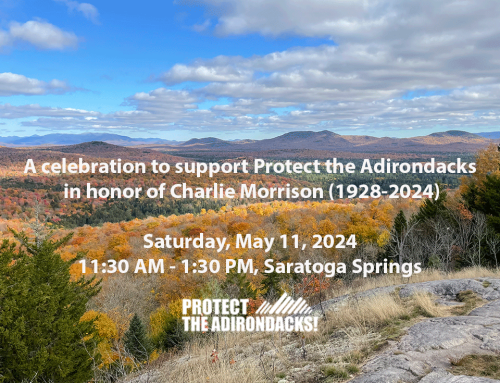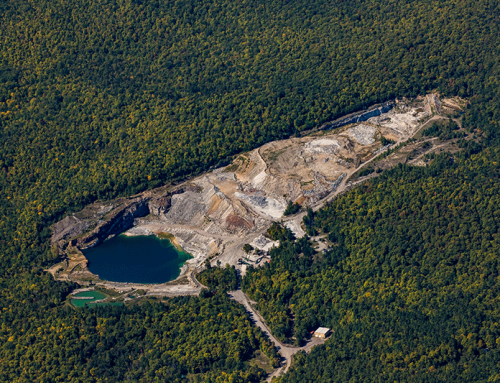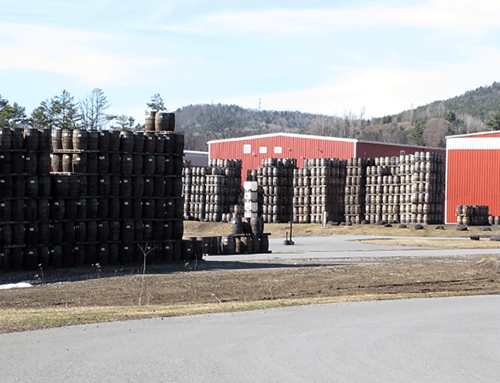For the past 25 days the chain saws of the Adirondack Park Agency (APA) and Department of Environmental Conservation (DEC) have been silenced and over 7,500 trees on the forever wild Forest Preserve have received a reprieve sparring them from destruction.
Protect the Adirondacks is in the midst of a lawsuit that challenges the constitutionality of new roadlike “class II community connector snowmobile trails” being constructed by the APA and DEC across Wild Forest areas of Forest Preserve (see pictures below of one of these “trails” in the Moose River Plains). We believe that these “trails” violate the Article XIV, Section 1 of the NYS Constitution in at least two ways: 1) due to the vast number of trees being cut down to build these trails; 2) due to the vast terrain alteration during construction of these trails. The lawsuit is currently in State Supreme Court in Albany.
Protect the Adirondacks has alleged in court that these trails violate Article 14, Section 1 of the New York State Constitution, the “forever wild” provision, due to the enormous amount of tree cutting. Article 14, Section 1 prohibits destruction of the trees on the Forest Preserve. PROTECT is trying to stop tree cutting before the courts make a decision on the constitutionality of this level of tree cutting.
In July, Protect the Adirondacks successfully intervened to win a restraining order, which was issued by an Appellate Court judge on July 15th and upheld by a panel of Appellate Court judges on July 25th, to stop further tree cutting on these trails. The matter is now before a State Supreme Court judge who heard oral arguments on July 25th. There has been no decision at this time, though the restraining order remains in effect.
Protect the Adirondacks starting counting stumps on trails where cutting had occurred and estimating the number of trees that would be cut on trails where new routes were planned in 2015-2016. For the new 14-mile Newcomb to Minerva trail, Protect the Adirondacks obtained an independent expert to count stumps of cut trees, provide an estimate of the additional trees to be cut, in order to detail the total level of tree cutting. In its public notifications and planning, DEC only counts trees greater than 3 inches diameter at breast height (DBH). This spring, DEC estimated it would cut over 1,600 of these large trees on over 7 miles of this new trail. When trees under 3 inches DBH were added to the tally, Protect the Adirondacks found that 5,500 trees would be cut on this section.
The entire trail from Newcomb to Minerva would require cutting nearly 15,000 trees. While nearly 7,500 trees have been cut so far, PROTECT is trying to stop the cutting of another 7,500 trees. Prior cases on the constitutionality of tree cutting on the Forest Preserve tallied both large and small trees. Protect the Adirondacks aged the stumps of a number of trees cut down on the Forest Preserve under 3 inches DBH and found many to be 30, 40 and 50 years old, or older.
Unlike other trails built on the Forest Preserve, new “class II community connector snowmobile trails” are excavated with heavy machinery to remove large boulders and stumps, utilize extensive bench cutting along trail sides, grade and flatten a wide trail surface area, remove thousands of trees over 3 inches diameter at breast height (DBH), remove thousands of trees under 3 inches DBH, remove the entire native understory, often replace the native understory with a grass mix, open the forest canopy, fracture and chip away bedrock, utilize oversized bridges often equipped with reflectors, and are built to handle operation of motor vehicles at high rates of speed. No other recreational activity in the Forest Preserve, outside of Intensive Use Areas such as ski areas or campgrounds, requires such tree cutting, terrain alteration and destruction of natural resources. Protect the Adirondacks believes that this planned network of hundreds of miles of class II community connector snowmobile trails violates Article XIV, Section 1 of the NYS Constitution.
This is a major lawsuit on the management of Article XIV, Section 1 of the NYS Constitution. This is important for the future of forever wild. Protect the Adirondacks believes that if the State of New York wants to build a network of road-like trails through the Forest Preserve that require the cutting of tens of thousands of trees, then the state should pursue a constitutional amendment to accomplish this.
The pictures below show a few portions of a new class II community connector snowmobile trail built in the Moose River Plains in 2012.
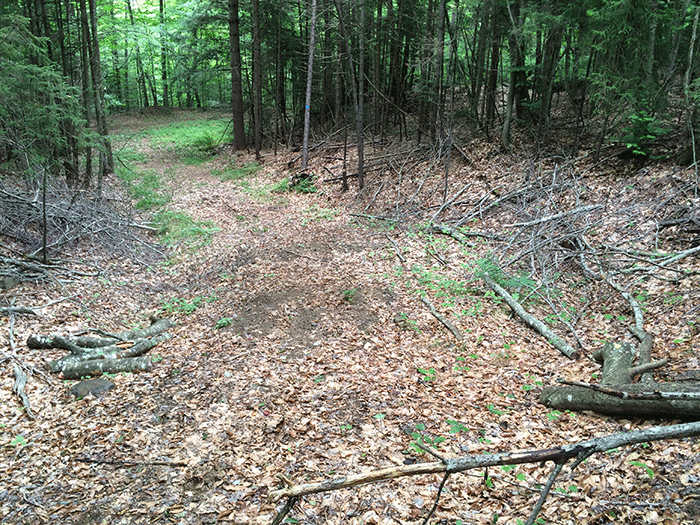
The Adirondack Park Agency and Department of Environmental Conservation cut these sections of the Seventh Lake Mountain class II community connector snowmobile trail in 2012. These sections are all well over the 9-12 feet trail widths allowed, have debris piles on the trailsides, mark a substantial change to the wild character of the Forest Preserve, and in no manner were built in the character of a foot trail. Note the reflector on the bridge, something not used on foot trail bridges.

